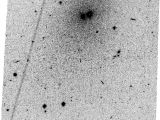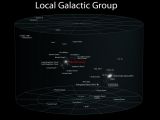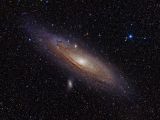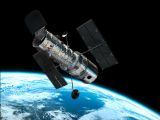Just yesterday, scientists with the Royal Astronomical Society and colleagues announced that, with the help of the Hubble Space Telescope, they managed to zoom in on a new neighbor of the Milky Way, which is our home galaxy.
This new neighbor is a teeny tiny galaxy now known to the scientific community as KKs3. It sits at a distance of about 7 million light-years from our planet, in the direction of a constellation in the southern sky dubbed the Hydrus.
Not to get carried away by semantics or anything of the sorts, but it's important to note that this fairly small galaxy neighboring our Milky Way is not exactly a new one. On the contrary, it's been around for quite a while now.
The thing is that, until the Royal Astronomical Society scientists got around to studying it, astronomers worldwide were utterly oblivious to its existence. Otherwise put, KKs3 is not so much a new galaxy as it is a newly discovered one.
Introducing our newest neighbor, KKs3
As mentioned, this galaxy is located at a distance of some 7 million light-yeas from our planet. This might seem like insanely far away, but the fact of the matter is that, as far as space distances go, it's actually quite close.
Study leader Igor Karachentsev and fellow researchers say that, according to data obtained with the Hubble Space Telescope's Advanced Camera for Surveys, KKs3's mass is the equivalent of one ten-thousandth that of the Milky Way.
The newly discovered galaxy is described as a dwarf spheroidal. This means that it lacks arms or any other cosmic structures that have until now been documented protruding from other space systems of its kind. Simply put, it's shaped like a sphere.
What's interesting is that, unlike many of the other galaxies currently populating the cosmos, dwarf spheroidals like KKs3 hold virtually no gas and dust. This means that they cannot form new stars and are stuck with just a few such celestial bodies.
Astronomers say that it is precisely because they pack very little gas and dust that such galaxies are not all that easy to discover and study. Thus, to document their existence, scientists must resort to analyzing individual stars.
A better understanding of our place in the cosmos
As shown by previous investigations, the Milky Way is part and parcel of a cluster comprising over 50 galaxies. Having discovered the dwarf spheroidal KKs3, scientist Igor Karachentsev and his team argue that it could be that this cluster, known as the Local Group, is much more complex than we imagine.
The Royal Astronomical Society researchers say that, in the months to come, they wish to continue surveying our cosmic neighborhood and see whether our Milky Way has other close friends that we are yet to discover and document.
“Finding objects like Kks3 is painstaking work, even with observatories like the Hubble Space Telescope. But with persistence, we’re slowly building up a map of our local neighborhood, which turns out to be less empty than we thought.”
“It may be that are a huge number of dwarf spheroidal galaxies out there, something that would have profound consequences for our ideas about the evolution of the cosmos,” astronomer Dimitry Makarov said in a statement.
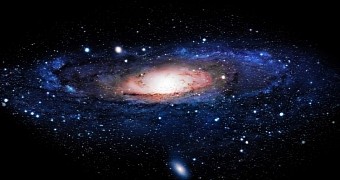
 14 DAY TRIAL //
14 DAY TRIAL // 
